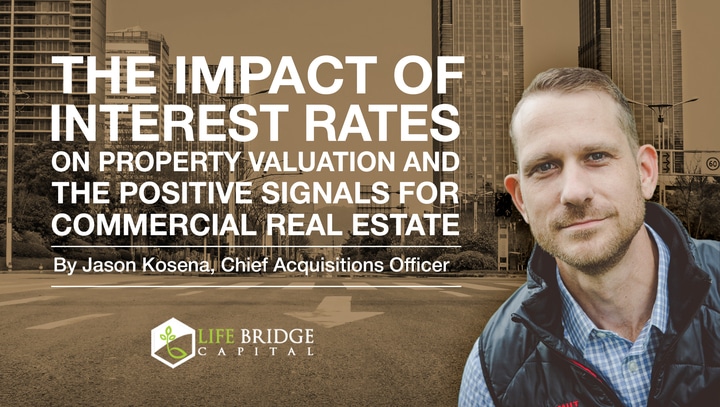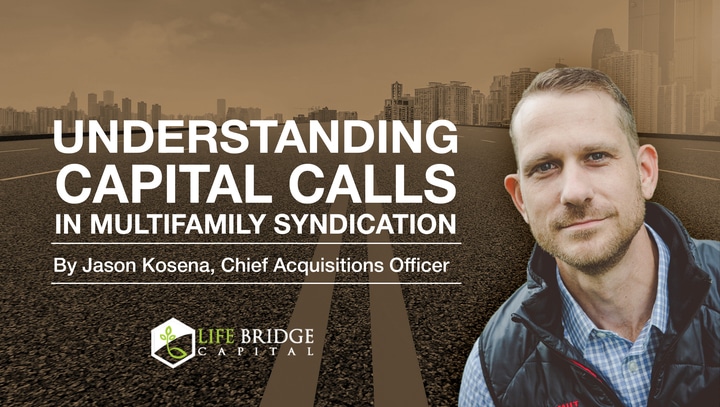If you are an investor focused on multifamily opportunities, you will most likely need to secure a loan to finance one or more of your properties. Fortunately, when it comes to financing multifamily properties, there are several types of loans to choose in order to acquire an asset. It is important to learn how multifamily loans work before submitting a deal offer, in order to make the loan application and subsequent process much easier.
This was the topic in one of LBC’s conversations with James Eng, National Director of Old Capital Lending and an expert in multifamily financing. Below are key points from our discussion including available financing options, how to qualify for a loan, and what the loan process is like. Click here if you want to listen to the podcast episode.
What are Multifamily Loans?
Multifamily loans are short-term or long-term loans for the development, purchase, or even rehabilitation of multifamily real estate. Financing allows first-time investors and seasoned professionals with limited liquid assets to acquire multifamily properties through loans made available by lenders across the country. Interest rates, term rates, loan limits, and down payment requirements will all vary depending on the specific financing program.
What Loan Programs Are Available for Multifamily Investors?
Here are the financing options available to multifamily property investors:
Government-Backed Loans (Fannie Mae and Freddie Mac) Or Agency Loans
Government-backed multifamily financing is sponsored by Fannie Mae (Federal National Mortgage Association) and Freddie Mac (Federal Home Loan Mortgage Corporation) and meets standards set by the Federal Housing Administration (FHA). Fannie Mae and Freddie Mac loans (also called “agency loans”) are non-recourse, meaning in the event of default, the lender cannot seize other assets owned by the borrower beyond the collateralized property.
Competitive rates can be fixed or variable but the minimum loan amount starts at $750,000 and is typically offered only for existing properties. Fannie Mae offers long-term financing for the stabilized multifamily property with a 30-year term and a high 80% loan-to-value limit. They also offer shorter-term financing programs of 5-7 years, bridge loans, mixed-use multifamily loans for alternative uses including retail, office, or public parking spaces, or rehab loans that can accompany other loan programs.
Conventional Loans
Conventional loans are available if you do not qualify for government-backed financing. These are loans provided by traditional lending institutions including banks, credit unions, or non-bank lenders, and are suitable for investors purchasing a lower-valued property starting as low as $500,000.
Terms vary from a shorter-term limit of 5 to 10 years to a longer-term of up to 30 years. Interest rates, which can be fixed or variable, may be higher than a government loan and lenders require 20% down or more. Most are recourse loans as well, meaning the lender can go after the debtor’s other non-collateral assets in case of default. The main pros of conventional loans are financing for new construction or developments and the lower loan amounts.
Bridge Loans
Agency and FHA loans can take longer than a conventional loan to close, so investors sometimes turn to bridge loans while waiting on the permanent loan to fund. They are also useful when the borrower hopes to demonstrate increased occupancy or rental rate and therefore needs more time to qualify for the permanent loan.
Bridge loans are temporary, so they usually have higher interest rates. Typically, these loans are only written for, at most, two years. However, they may sometimes be extended for an additional year or so.
Veterans Administration Loans
The U.S. Veterans Administration (VA) also insures residential loans for qualifying service members and their families. While most are well known for single-family loans, the VA program insures properties with up to four units.
For borrowers that qualify for a VA loan, it’s a great entry point in your real estate investment career. VA loans for small multifamily properties offer the same great benefits as for single-family homes — up to 100% financing, long terms, low-interest rates, no private mortgage insurance requirement, and no minimum credit score.
What Type of Loan Suits My Multifamily Investment?
Fannie Mae
To qualify for a Fannie Mae loan, you need to meet the following criteria:
- Occupancy Rate: The property needs to be 90% occupied for the last 90 days to be considered stabilized.
- Net worth and liquidity of the general partners: You or your collective investor group need to have a net worth greater than the loan amount, and post-close liquidity – including cash and marketable securities, non-retirement – of at least 10% of the loan amount.
- Prior multifamily experience
“Fannie Mae and Freddie Mac provide loans on stabilized properties and require sponsors to have a multifamily experience. On Fannie Mae, it’s probably 75% on the property and 25% on you as the borrower. If it falls outside of that box, you won’t qualify for a Fannie Mae nor for a Freddie Mac. That’s when you’re going to walk into a bridge loan or a recourse bank loan”, says Eng.
“If a deal qualifies for Fannie and Freddie, it almost always wins.”
Bank Loans
“If your occupancy is lower or you don’t have the multifamily experience or you’re looking at doing your first deal then it’s probably a bank loan at the very beginning,” advises Eng.
Bank loan terms can be very stringent – loans are recourse, less than 80% leverage, interest-only options, and typically require tax returns as part of their underwriting. However, your needs and situation may be best served by a bank loan because of the loan structure, the pricing, and your limitations to qualify with agency loans.
Most investors doing smaller or non-stabilized deals use recourse loans, while investors who are buying stabilized, larger deals use the non-recourse Fannie Mae and Freddie Mac.
What Is the Process to Get a Loan?
To obtain Fannie Mae or Freddie Mac loans, you will need to see approved lenders that are authorized by these agencies to offer loans directly to borrowers. It will help to have a third-party mortgage broker or a bank loan officer to guide you through the process.
Lenders in any capacity will want to know more about the property as a business and require extensive documentation for underwriting and will typically require the following:
- Property management agreements, current lease agreements, insurance policy declaration pages, and tax bills.
- If you plan to hold a title in a limited liability company (LLC) or other entity, you will need an employer identification number (EIN), organizational chart, articles of incorporation, and investing business plan.
- Property details: Address, photos, number of units, age, year one pro forma (your budget for the first year), and your rehab budget.
- Property financials: Current operating statement, offering memorandum, TTM, rent roll, utilities, and copies of service contracts like landscaping, pool maintenance, and pest control.
- Personal financials and resume: your own and each key partner with more than 20% equity’s financial statement and balance sheets, and bank statements for any qualifying reserves or down payment funds.
- Schedule of real estate owned (SREO): list all properties that an investor has full or partial ownership of, including corresponding debt obligations.
I Don’t Have the Liquidity or Multifamily Experience – How Will I Qualify for Loans?
Even without multifamily experience, you may still qualify for a loan but with conditions.
- Find a partner who will sign with you on a Fannie Mae loan. When you add up the sponsorship group’s total net worth and liquidity, the total should be greater than your loan amount.
- Do a recourse bank loan on a multifamily property and hold that property for at least a year – this fulfills the multifamily experience requirement. However, your next multifamily loan must be a comparable size to the previous one. Lenders want you to go up the ladder slowly. If you do a ten-unit deal then the next should be about forty units, not two hundred.
What Could Delay Loan Approvals?
- Incomplete or late submission of documents
- Withholding of information, such as bad credit
“If you have any prior bankruptcy or litigation currently against you, you need to tell the lender upfront. When we send you the loan application, there are questions like, “Have you ever declared bankruptcy? Do you have any litigation currently against you?” It’s always better to be upfront about that rather than the lender running a search and finding out,” cautions Eng.
- Declining Occupancy Rate
“On the property side, as long as the occupancy and the property are stabilized, we haven’t had an issue. Sometimes, there are sellers who get the deal under contract and after a month or two, the occupancy goes from 90% to 85% to 80% and all of a sudden Fannie Mae can’t lend on the property.”
- Lack of Environmental Report
It is crucial to have an environmental report done. Typically called a “Phase 1 Environmental”, this tells the historical use of the property and the surrounding areas that may affect the property – for example, gas, flood plains, and chemicals that may affect groundwater.
Getting Started in Multifamily Investment
Securing multifamily loans may sound intimidating at first. But with many loan programs available, it can be one of the easiest commercial loans to seek financing for. It’s wise to know your options and shop around before determining what program will meet your specific investment needs.
Teaming up with the right broker and lender will surely help you through the process. Once you’ve secured a loan that provides the best value, you’ll enjoy the high ROI that multifamily investments generate. Interested in multifamily investing? Life Bridge Capital is here to guide you. Schedule a call by emailing your availability to [email protected].


